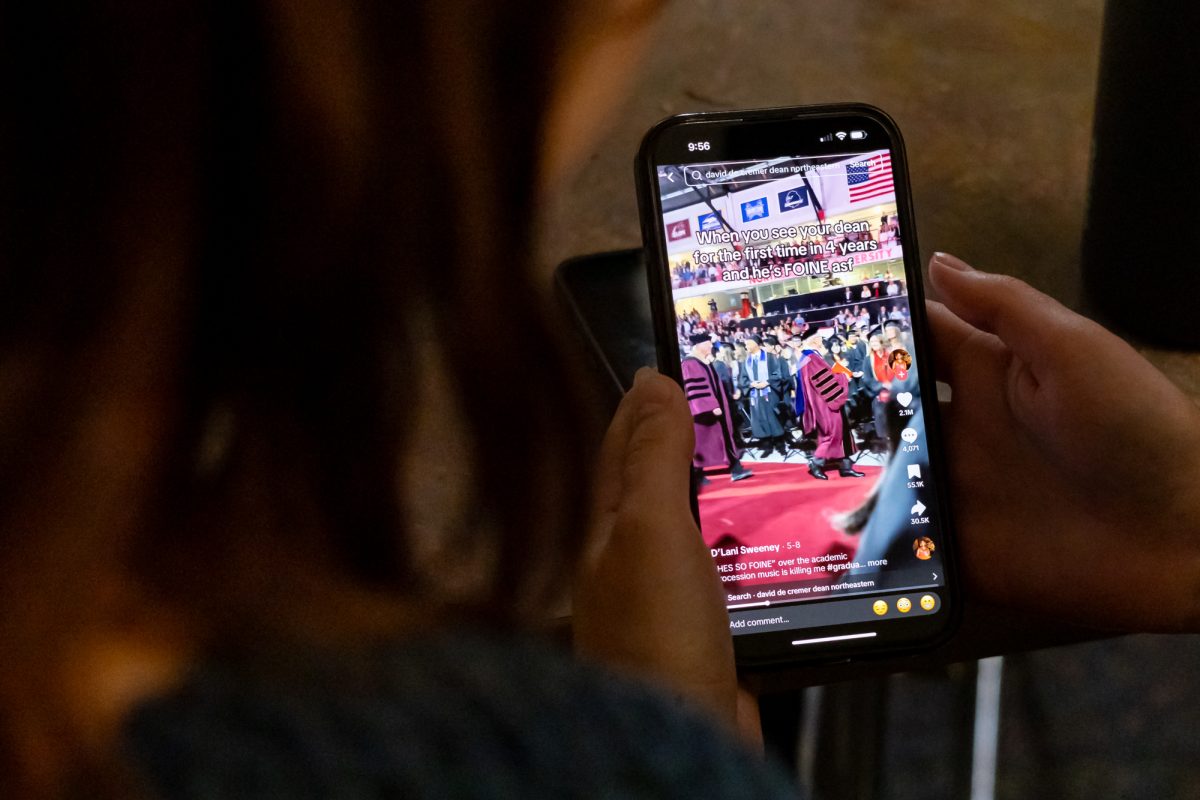
By Yisu Kim
News Correspondent
The auditorium stills as the lights dim, but the moment a plaid pant leg peeps out from behind the curtain, the room explodes with applause and peals of laughter. The roar of the crowd continues as choreographer Bill T. Jones steps forward and takes several sweeping bows, a performer from the start.
Jones, a celebrated Tony Award winner, gave a lecture to Northeastern students and the general public in Blackman Auditorium Oct. 1 as a Center for the Arts at Northeastern University event. During “An Evening with Bill Jones,” he shared his insights on life, not only as a famed choreographer, but also as a director, writer and dancer. Jones, who won the MacArthur “Genius” Award in 1994, covered a wide spectrum of topics ranging from historical inspiration to multimedia usage during his lecture.
Jones, who has experience working in multiple niches of the entertainment world, was able to use his broad knowledge of the industry to reach out to students from all performance arts backgrounds.
“Hopefully, [the talk] will inspire students to create new work that is relevant and cross disciplinary,” Center for the Arts Director Jay Vultaggio said before the performance. “He works in dance, theatre, arts, music and is constantly forging new ties between them. He’s a modern legend.”
Because Jones understands the importance of weaving different mediums together, he has enhanced his performances with the diverse body of media available to him, he said.
“The work I do is multimedia,” Jones said. “I use text, music, video, dance. Text can be delivered digitally or by actors. Heavy on the conceptual, heavy on the intellectual. That’s what is beautiful about performance.”
One of Jones’ signature pieces, “Fondly Do We Hope … Fervently Do We Pray,” pays homage to Abraham Lincoln. Detailing the history of the civil rights movement and the fingerprints it has left on society, Jones spoke of this piece to the audience and played segments of the performance afterward.
“What is there to be said of Lincoln?” Jones asked. “Throughout this piece, there was a rhetorical device – you would have called it ‘History is.’ My favorite part of the pieces – after the war, after the destruction – we’re left with one dancer on stage and we see Lincoln’s final address. By the end of the speech, his voice is a silver trumpet.”
Throughout the two hour lecture, Jones strode from one side of the stage to the other, bursting into song one moment and somberly retelling the events of Sept. 11 the next. He engaged the audience constantly, imploring volunteers to come onto the stage and help him illustrate his most important points.
“There was this desire to make people listen, to make them love,” he said. “There was this desire for authenticity. Originality is a challenge. To me, my job has always been to hone in on what touches me and put it on stage to connect to you, to my audiences.”
At the end of the lecture, Jones held a question and answer session for the audience and entertained questions about his personal life as well as his career. When the last question was answered, Jones took one last bow and swept off the stage, the crowd cheering on its feet as he exited the room.
“I thought he was very inspirational,” David Andre, a freshman at The Boston Conservatory, said. “He had a lot of intellectual things to say, and it really made me think about reality. Also, his choreography and style are very intricate. I kept thinking to myself, how is his brain ticking?”








